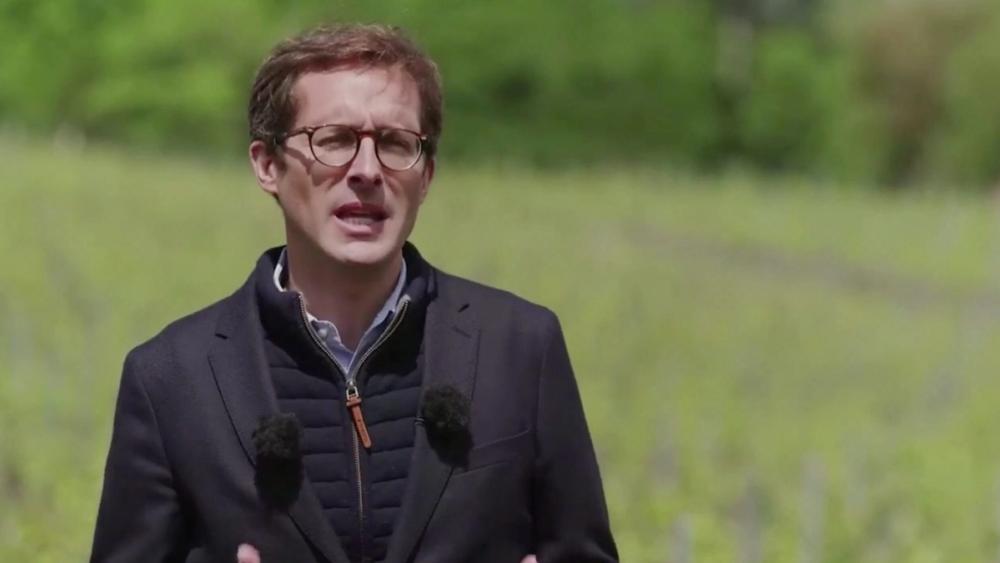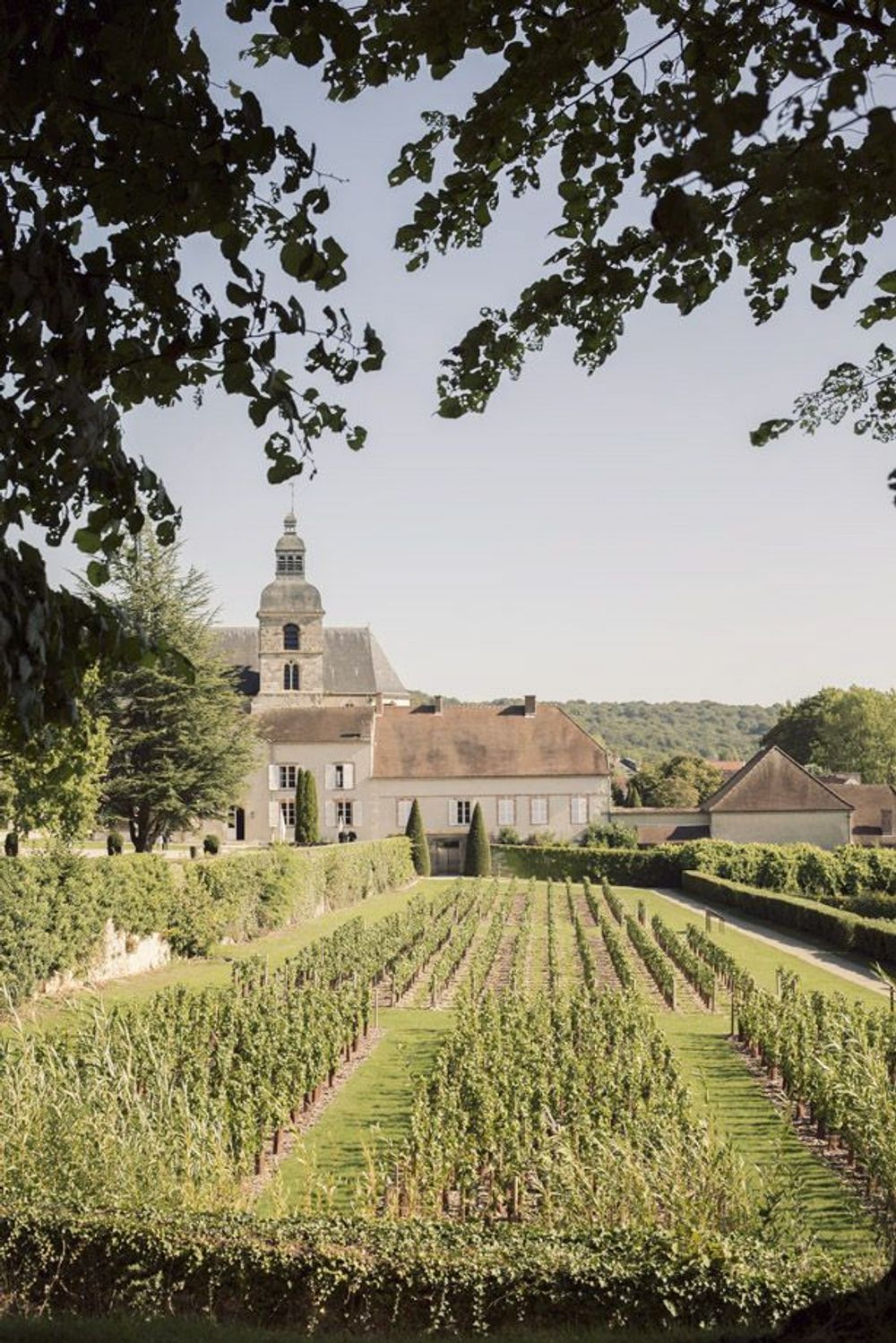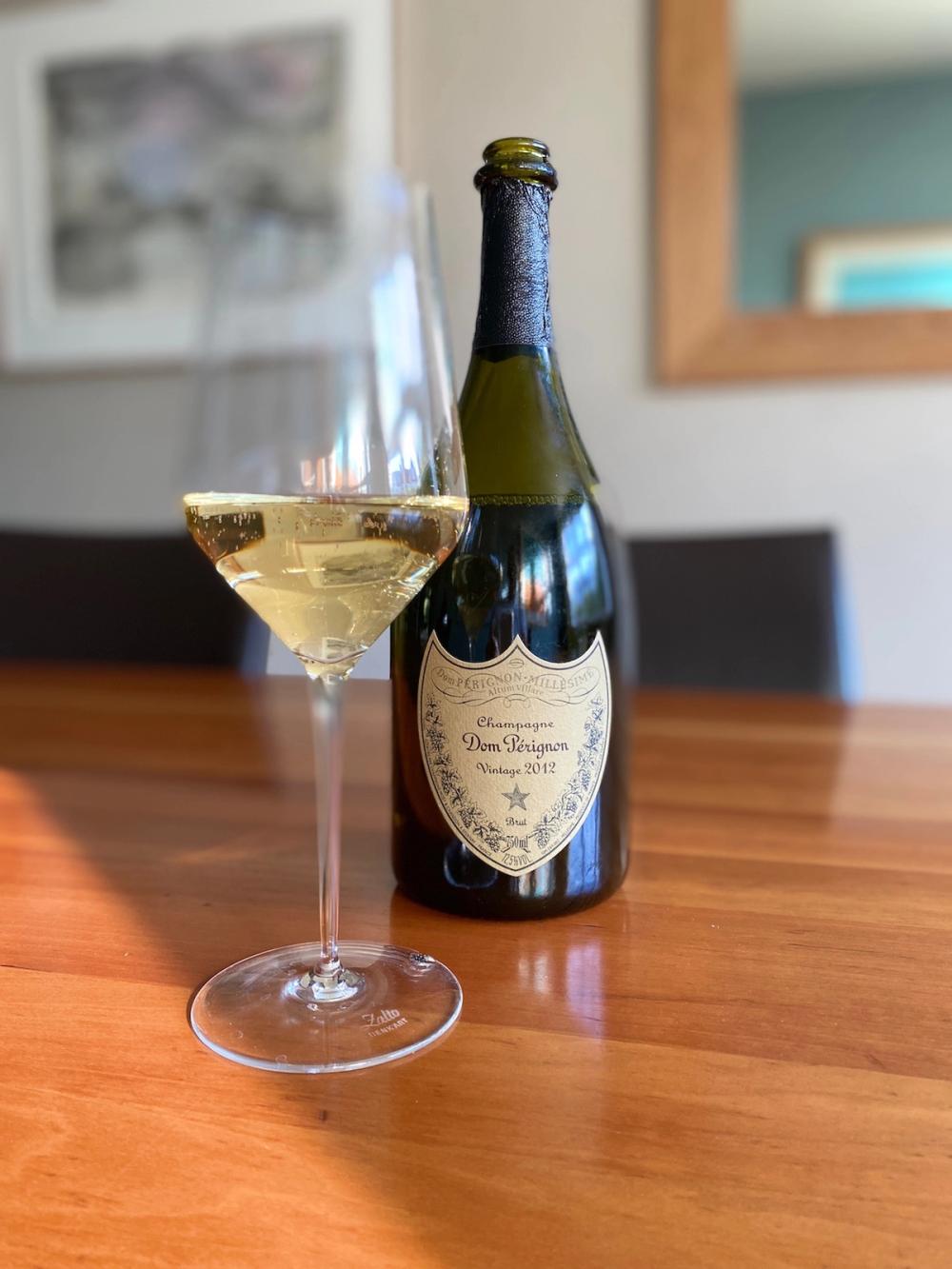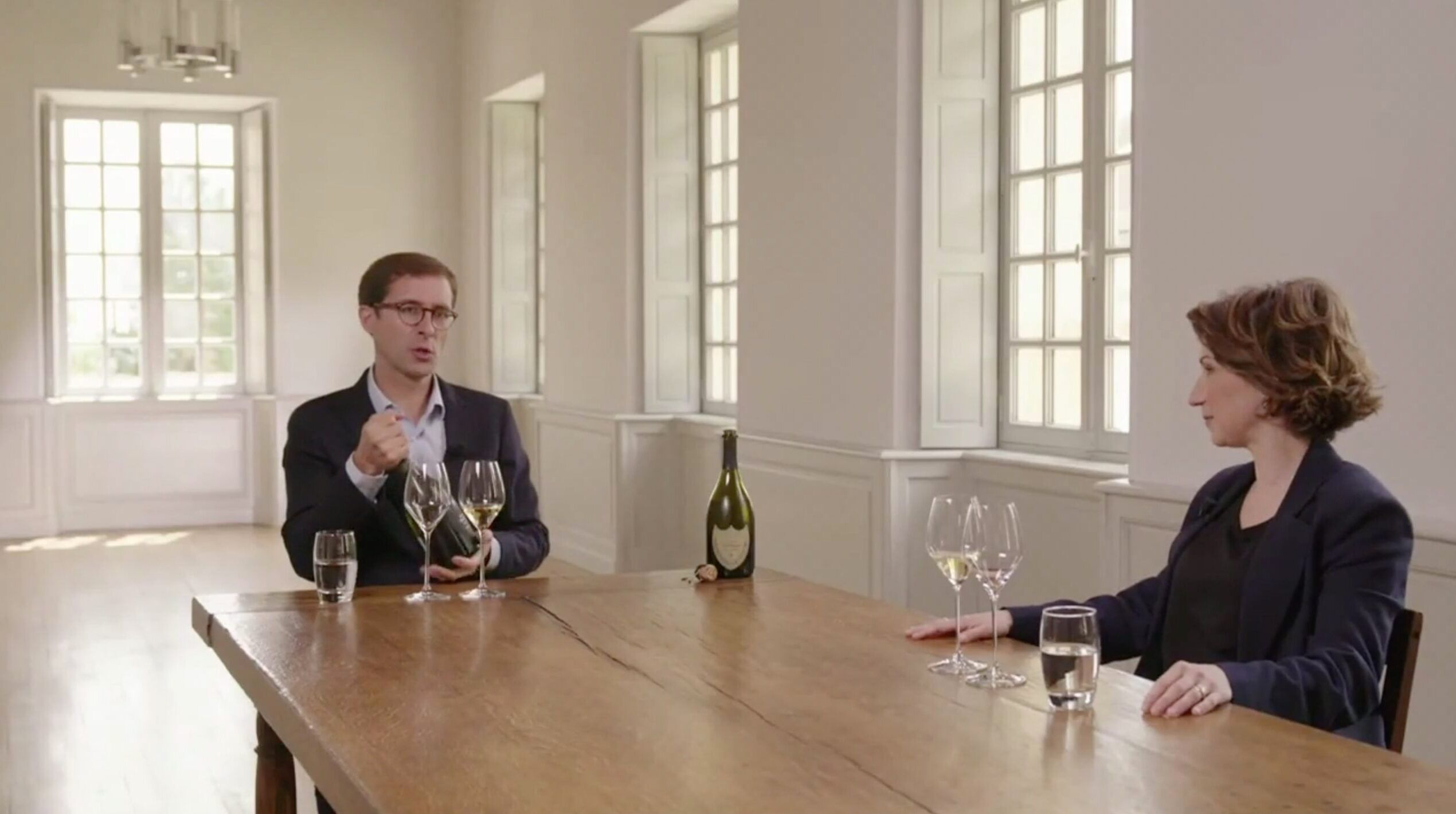“The vintage allowed us to use polar opposites to the greatest advantage. A contrast between north and south, east and west, Chouilly and Mesnil, Hautvillers and Mailly, and Aÿ and Boozy,” Chaperon says.
For the second year and vintage in a row, Champagne Dom Pérignon was forced to conduct the declaration of its new vintage Dom Pérignon Vintage 2012 in a virtual setting. In a 45 minute video cellar master Vincent Chaperon presented the new wine in three locations – vineyard, cellar, tasting room – before taking questions from 10 journalists in a live Zoom hook-up.
The video was called ‘Revelations’ which presumably was chosen as the start of an ongoing series of instructional masterclasses from the House, rather than a reference to the apocalyptic book in the Bible in which we all meet a fiery end – with no glass of vintage Champagne in sight.
Revelations attempted to be as down to earth as the launch of the 2010 this time last year with the bombast largely reserved for the marketing collateral – “perpetual quest” and so on – and Chaperon attempting to get back to brass tacks by concentrating on the importance of blending to both the 2012 vitange and Dom Pérignon as a House.

“You have to challenge the wine, to make it sing you have to attack it.” Vincent Chaperon, Dom Pérignon 2012 launch, June 8, 2021
How 2012 was a year of contrasts from the start
First he gave us an insight into the 2012 vintage, a ‘solar’ year noted for its warm summer that saved this turbulent growing season.
“2012 is one of those years full of contrasts and paradoxes – contrasts were there from the beginning of the climatic trajectory because we had a winter and spring that were quite aggressive with a lot of climatic events like hail, frost, disease as well, but in the scond part of the year the sun was there and the condition was perfect – this contrast of the climate was there the first time I tasted the Pinot Noir and the Chardonnay, there was this balance between precise acidity on the one hand and on the other very generous, with a textured maturity in the grapes.”
“The second thing about 2012 is about the diversity we had in our hand, more than other years, every grape variety, every region, every village, every plot in 2012 performed at their highest level which gave us the maximum opportunity to select and to work on our blend, so that’s always to play on, you know, this game of contrasts and opposition that we need at Dom Pérignon to build every year to get this harmony.”
Chaperon calls the diversity within the region “unparalleled…. allowing the vintage to use polar opposites to the greatest advantage. A contrast between north and south, east and west, Chouilly and Mesnil, Hautvillers and Mailly, and Aÿ and Bouzy. A contrast between vineyards and grape varieties: the delicate touch of Chardonnays, bringing roundness on the attack and underpinning the wine’s lengthy finish with their acidity, and the glorious fruitiness of Pinot Noirs, with their firm, dense structures.”
It is for this reason Chaperon makes great store of the importance of blending – his three dynamics of which are selection, pre-blending and final blending.
Chaperon has said that 2012 was a year of “explosive harmony” so what exactly does he mean by the ‘harmony’ he is seeking in the wine?
“The definition of harmony I prefer is the art of creating beauty through order – in a way we are ordering what nature is giving to us – a kind of balance – so every year the results are different, the most important is that we are following the same principle which again is the play of contrasts – to really stretch a line for the wine to develop itself,” he says.

The Abbey of Saint Pierre d’Hautvillers, credited with being the birthplace of Champagne
Chaperon’s view of the finished wine and how it compares
If there is a vintage most like 2012, Chaperon references 1990 or 2008. Interestingly, he doesn’t cite 2002 like most Champenois, admitting that he feels that in 2002 Dom Pérignon got the timing wrong with Chardonnay, picking it too ripe which has led to considerable brioche and buttery notes as it has got older.
“2002 now has brioche, buttery notes it is generous and quite rich – so to go back it made us think about Chardonnay, it was a bit overripe we picked it a bit too late to get precision and vibrancy in the wine; but we won’t have that in 2012 – we didn’t have that extra ripeness on the Chardonnay. With 2012 we have ripeness and concentration but not to the full extent like 2003, it’s the same but 2003 was more extreme.”
When tasting the 2012 Chaperon says “my first impression was 2012 was a year when Pinot Noir and Chardonnay were offering a lot of maturity as well as a lot of concentration – this combination of maturity and concentration and balanced and harmonious, also rich, dense.”
“As soon as you smell it and come back to it the nose is full and varied, mingling flowers with fruit, and the vegetal with the mineral. The bouquet is tactile, subtly enticing us along a trail of powdery white flowers and nectareous apricot, followed by freshness of rhubarb, and mint and then the vegetal appears – what we like to underline – then you feel the mineraility of ash. White pepper.”
“On the palate it is quite clear there is one word – energy. The attack is rounder, welcoming but very quickly it is starting to vibrate and then explodes in your mouth with a surge of effervescence and tonicity. Focused by acidic and bitter notes, the finish brings a penetrating tautness marked by ginger, tobacco and toasted accents.”

So what were my impressions of the Dom Pérignon Vintage 2012?
2012 was a solar year, as we heard, and Champagnes from 2012 generally are open, generous and accessible and this classic Dom Perignon is no exception, a vintage that welcomes you with open arms.
The wine is pale to medium gold, an abundant mousse leads into a fine steady bead; the nose is unmistakeably Dom Perignon with the dial turned towards the riper end of the scale, a complex and varied set of aromas whose immediate impression is one of homogeneity and harmony and then with time and thought breaks down into its constituent parts – a mix of fruit, toasty and vegetal – there’s a flowery autolytic character, peony, Mirabelle plum, apricot, lemon-infused rye crumb, there’s a vegetal character and a minty lift.
The palate is vibrant with zingy acidity, nicely balanced and integrated with the roundness of the ripe fruit, creamy but bolstered by the effervescence and a good degree of tension. It is concentrated but focused, strait-laced, long, bitter and dry – a touch of salinity on the finish too. The wine is possibly more open than 2008 was on release, has some of the power and richness of 2002, some of 2004’s energy and salinity and yet is sharper and more tense than 2010, to put the wine into an historical context. Chaperon compared it to 1990, incidentally and recommended spicy food as a pairing “You have to challenge the wine, to make it sing you have to attack it.”
The blend seems pitch perfect, elegance with breadth, complex but not overly so and a classic DP in every sense.
Technical details :
Pinot Noir 51 % / Chardonnay 49%
Dosage 5g/L
Disgorging date : September 2020
Dom Pérignon Vintage 2012 is available from October 1, with a suggested retail price of £152 per 750cl bottle









































